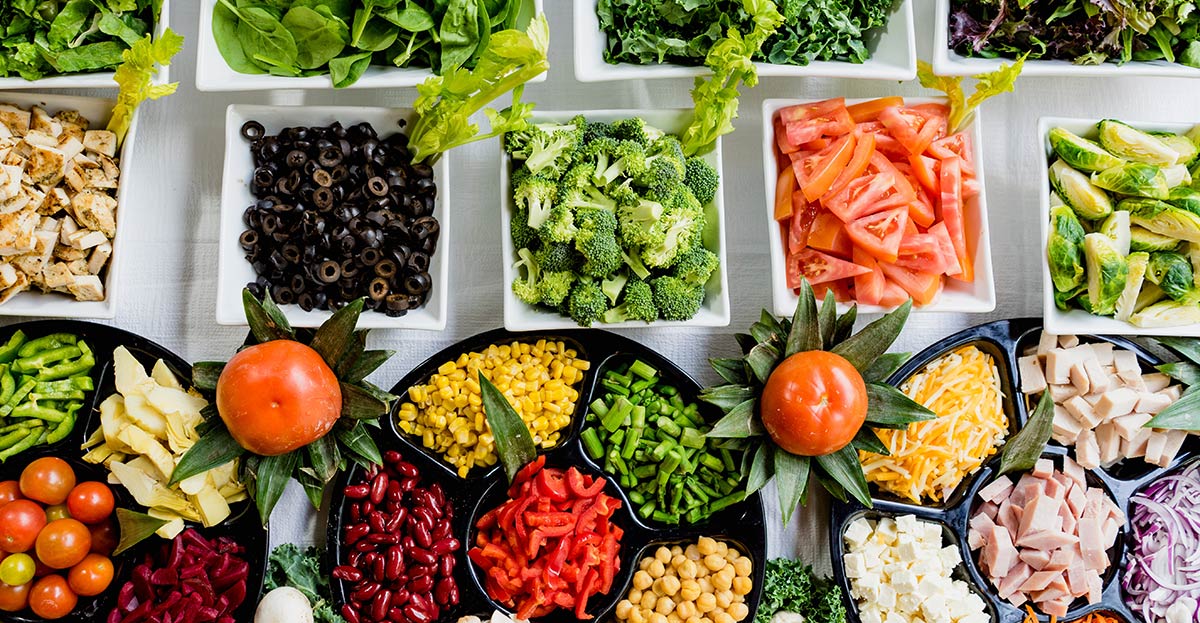12 Tips for Better Blood Sugar Control
- Category: Health & Wellness, Diabetes
- Posted On:
- Written By: Lindsey Arevalos, MHA, MS

Every five minutes, 16 American adults are newly diagnosed with diabetes, according to the Centers for Disease Control and Prevention. In 2014, nearly 10 percent of the U.S. population had been diagnosed with this disease, which affects people of all ages and ethnicities. Another one in four people weren’t even aware they had diabetes. Switching to healthier foods is one lifestyle change that can help people manage their diabetes more easily.
Those who are pre-diabetic or diagnosed with type 2 diabetes may be happy to learn post-diagnosis that they can still eat foods with carbs. After all, fruits, vegetables, legumes and whole grains are all carbohydrate foods and play a role in every healthy diet. But here’s a caution: Avoid the highly refined carbohydrates made from white flour, which tend to contain added fats, salt and sugar and tend to be higher in calories and lower in vitamins and minerals.
According to the food and nutrition education organization OldWays, understanding the effect of carbohydrates on blood sugar is only one part of helping diabetics choose a healthy diet. The quality of fats and proteins matters too, as do fiber, vitamins, minerals and other factors.
Use the following tips to help:
- In general, whole and minimally-processed foods are better choices than highly-processed foods for keeping blood sugar steady.
- Choose hot oatmeal or porridge (not instant) instead of processed flakes or puffs.
- Choose whole fruits rather than fruit juice. Drink juice in small quantities or mixed with sparkling water.
- Skip the fluffy, light, white bread. Whole grain bread has a lower glycemic index. Foods with a low glycemic index score of less than 55 support energy levels and overall health. An added tip when it comes to bread: true sourdough bread is less likely to cause your blood glucose to spike than yeast bread.
- Pasta has a low glycemic index, especially when it’s cooked al dente (firm to the bite). Enjoy pasta with plenty of vegetables and beans or fish for a healthy pasta meal or try the new pasta made from beans and lentils. Here’s a little-known fact: flour and water made into pasta digests more slowly than if the same flour and water are made into bread. This makes pasta a better choice for controlling blood sugar, but you must watch your portions. One serving of pasta (15 grams carbs) is 1/2 cup, cooked.
- Enjoy balanced meals and snacks. Eating healthy fats like nuts, seeds and lean protein with carbohydrates lowers the overall glycemic load of a meal or snack.
- Eat legumes (beans, peas, nuts, lentils). Serve lentil soup, a bean-filled chili or a chickpea salad. Add beans to soups, salads, pasta and other dishes—or try mashing white beans with your potatoes.
- Increase fiber. Certain fibers, including resistant starch (found in foods including beans, under-ripe bananas, cold pasta and potato salads), lower your body’s glycemic response. A mostly-plant-based diet provides a good variety of different types of fiber.
- Eat a variety of intact whole grains, and be sure not to overcook them. Intact grains such as quinoa, barley, wheat berries and rye berries have a low glycemic index, especially when they’re cooked al dente.
- Add zest. Acidic foods lower your glycemic response, so squeeze lemon juice on your broccoli, eat your breakfast cereal with plain, low-fat yogurt, and add a salad with a dressing of oil and balsamic vinegar to your dinner.
- Enjoy healthy snacks such as carrots with hummus, apple slices with almond butter, or plain, low-fat yogurt with fresh or frozen berries.
- Practice portion control. Too much of even a healthy food is, well, too much. Serve yourself a modest portion, eat slowly and mindfully, and reflect before you reach for more.
For a wealth of healthy eating information visit oldwayspt.org. Oldways is a nonprofit food and nutrition education organization, with a mission to inspire healthy eating through cultural food traditions and lifestyles.






